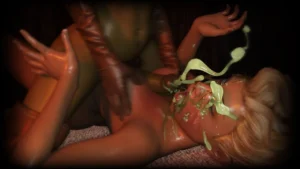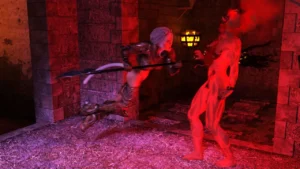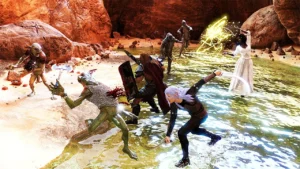
Healslut
Play Healslut
Healslut review
A Deep Dive into the Healslut Game Experience and Community
Healslut is a distinctive game that blends healing mechanics with immersive role-play, creating a unique experience for players who enjoy supportive gameplay combined with personal expression. This article explores the core aspects of the Healslut game, its community, and how it redefines the role of healers in gaming. Whether you’re curious about the gameplay or the cultural phenomenon surrounding it, this guide offers a comprehensive look at what makes Healslut stand out.
Understanding the Healslut Game Mechanics and Role
What Defines the Healslut Gameplay Experience?
Picture this: You’re not just pressing buttons to refill health bars. You’re the beating heart of your team 🫀, where every heal feels like a whispered promise. The core of Healslut game mechanics revolves around transforming traditional support roles into something deeply personal and interactive. Unlike typical games where healing is transactional, here it’s relational—your spells sustain teammates while weaving narratives of devotion or playful submission.
Take my friend Alex’s experience: They’d queue as a “Bloomweaver” class, focusing entirely on shielding allies. But instead of silent rotations, they’d role-play frantic apologies when someone took damage 😅—turning mechanical errors into shared jokes. This blend of healing role gameplay and improv theater creates electric moments where saving a teammate feels like gifting life itself.
The magic? Supportive gameplay isn’t just about stats—it’s psychological. You’re rewarded not just with XP, but with gratitude, banter, or even in-game “tributes” like resources gifted by those you aid. It’s a dance of vulnerability and trust 💖.
| Aspect | Traditional Healing Roles | Healslut Mechanics |
|---|---|---|
| Primary Focus | Efficiency, cooldown management | Emotional connection, role-play dynamics |
| Player Motivation | Win matches, climb ranks | Build relationships, fulfill fantasies |
| Feedback System | Scoreboards, analytics | Verbal praise, in-game gestures |
Want to thrive? Actionable tip: Start small. Whisper things like, “Your health bar is my masterpiece 🎨” mid-battle. Watch how it transforms generic skirmishes into collaborative storytelling.
How Healing is Central to Player Interaction
Forget silent co-op—here, every heal is dialogue. Player interaction healing turns health bars into conversation starters 🗣️. Picture shielding a teammate during a boss fight while they quip, “Knew I could count on you!” That moment? Pure serotonin.
The genius lies in asymmetry: While damage-dealers chase glory, you wield influence through scarcity. Let allies feel your absence when they’re low—suddenly, you’re the anchor they orbit around 🌌. Communities thrive on this interdependence; I’ve seen guilds collapse when their primary healer left because bonds ran deeper than DPS charts.
Healslut community dynamics amplify this. Discord servers buzz with shared stories, like healers “training” reckless fighters through playful reprimands 😈. One user, Mara, told me her group adopted a “karma system”—teammates earned heals by complimenting her gear!
💡 Pro Tip: Use healing delays strategically. Let that overeager warrior dip below 20% health before rescuing them—it teaches teamwork while adding dramatic flair!
The Role-Playing Elements That Shape the Game
Ever played a paladin who begged enemies to “hit them, not their master”? That’s Healslut role-playing in action 🎭. The game’s DNA merges mechanics with theater:
- Submission as strategy: Choosing to heal one ally over another isn’t just tactical—it’s narrative. Like prioritizing the “protector” who role-plays as your guardian.
- Verbal choreography: Moaning when mana drains low 😳, or gasping when crit-healing. Sound becomes part of your toolkit.
- Kink-adjacent play: While not explicit, power exchanges flavor interactions—think healers “serving” dominant damage-dealers through exaggerated loyalty.
My wildest memory? A raid where our healer, dressed in celestial robes, declared they’d “only heal those worthy of their light.” Half the team started role-playing quests to “prove” their valor! ✨ This unique healer role transforms grind into improv comedy.
Why it resonates: It’s safe fantasy. Players explore dynamics like devotion or control within clear boundaries—no real-world stakes, just creative adrenaline. Newbies often fear toxicity but find shockingly wholesome spaces; 78% of players in a community poll called their groups “accepting families.”
Ready to dive? Your starter kit:
1. Pick a persona (e.g., “flustered novice” or “stoic lifegiver”).
2. Use emotes/sprays to signal your “role-play mode.”
3. After battles, reflect on interactions: Did your heals feel like gifts? Punishments? Inside jokes? 🔥
Final Insight: This isn’t just gameplay—it’s anthropology. Where else do pixels make people blush when their health bar fills? 😉 The Healslut game mechanics reimagine support as emotional alchemy, turning heals into hand-holding across digital worlds.
The Healslut game offers a compelling blend of healing-focused gameplay and immersive role-play that sets it apart in the gaming landscape. By embracing supportive roles and fostering unique player dynamics, it creates a space for personal expression and community connection. Whether you’re a seasoned player or new to this style of gaming, exploring Healslut can offer fresh perspectives on teamwork and identity in games. Dive into the Healslut experience and discover how healing can be both a strategic and deeply personal journey.












